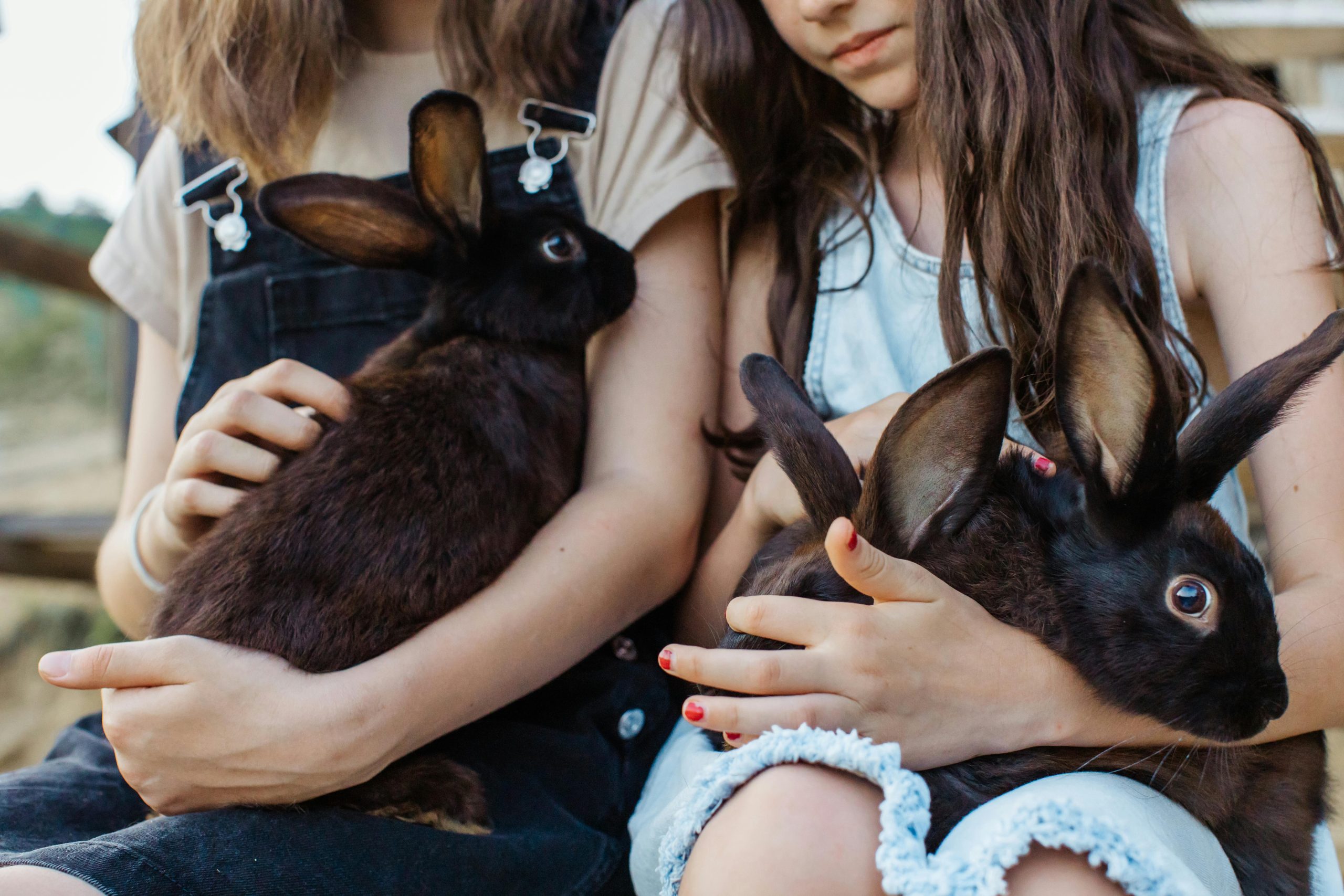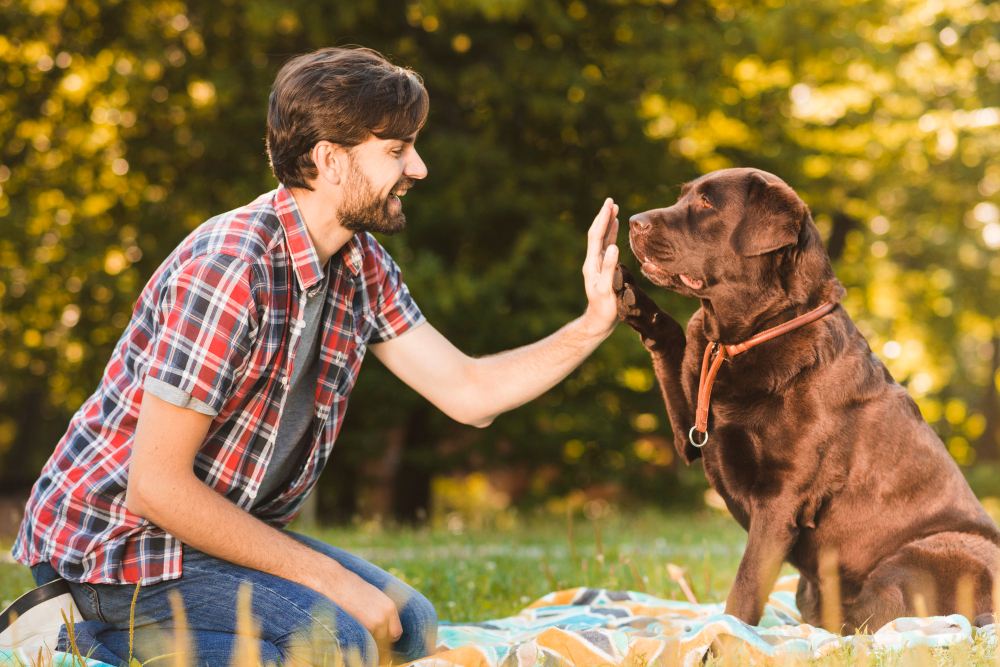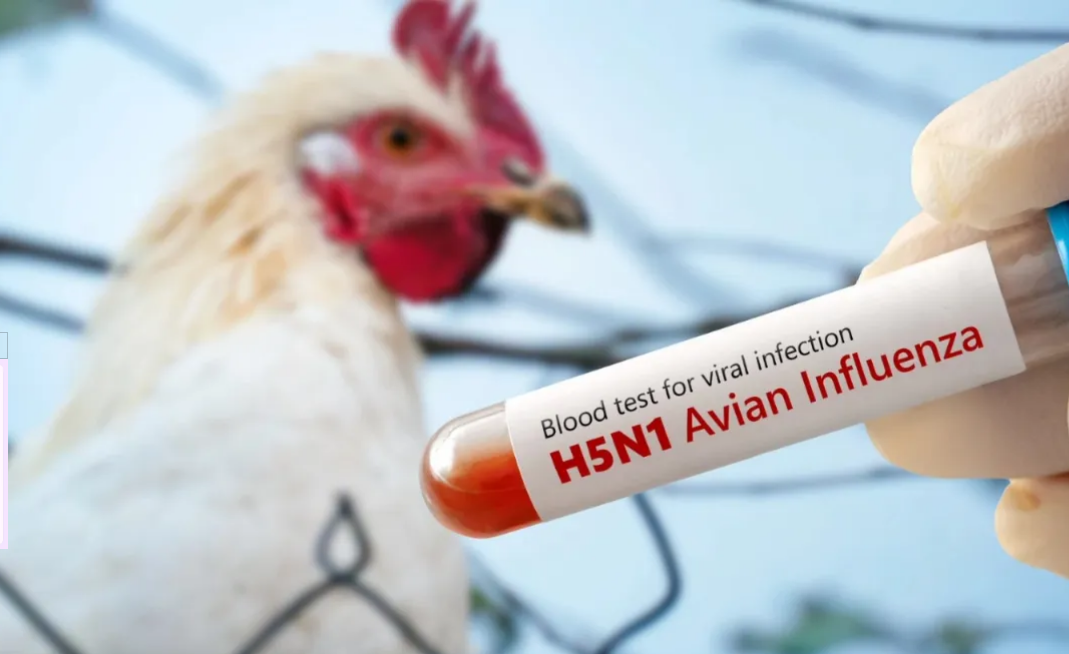Pet and animal
The Role of Pets in Child Development: How Animals Shape Young Minds

Introduction: Why Pets Matter in a Child’s Growth
Pets are more than just adorable companions; they play a crucial role in a child’s development. Whether it’s a playful puppy, a gentle cat, or even a small hamster, animals help children learn responsibility, develop emotional intelligence, and build social skills.
Many studies suggest that growing up with pets provides numerous benefits, including increased self-esteem, reduced stress, and improved cognitive abilities. But how exactly do pets influence a child’s growth, and what aspects of development are most affected?
In this article, we’ll explore the role of pets in child development, highlighting how animals contribute to emotional, cognitive, social, and physical well-being.
1. Emotional Development: Teaching Compassion and Empathy

Photo by Helena Lopes: https://www.pexels.com/photo/cheerful-girl-in-red-dress-running-with-dogs-on-leash-outdoors-4453109/
One of the most significant benefits of pets in child development is their impact on emotional intelligence.
How Pets Help with Emotional Growth:
- Encouraging empathy: Caring for a pet helps children understand emotions and recognize the needs of another living being.
- Providing comfort: Pets offer unconditional love, reducing stress and anxiety in children.
- Building patience: Training and caring for an animal requires patience, helping kids develop emotional regulation skills.
Children who grow up with pets tend to express emotions more effectively and show greater compassion towards others.
Pro Tip: Encouraging children to talk to their pets can help them process their feelings and improve emotional expression.
2. Social Skills and Communication: Strengthening Interactions
Pets can serve as social bridges, helping children develop better communication and relationship skills.
How Pets Improve Social Skills:
- Reducing shyness: Children with pets often feel more confident in social settings.
- Encouraging friendships: Talking about pets can be a great icebreaker for kids when making new friends.
- Improving non-verbal communication: Kids learn to read their pet’s body language, which enhances observational skills.
Studies show that children who interact with pets tend to be more socially active and better at forming relationships.
Pro Tip: Encourage children to participate in pet-related group activities, such as dog training classes or pet clubs, to enhance social interactions.
3. Responsibility and Life Skills: Learning Through Care
Owning a pet teaches children essential life skills, fostering a sense of responsibility, discipline, and independence.
How Pets Teach Responsibility:
- Daily routines: Feeding, walking, and grooming pets help kids establish consistent habits.
- Accountability: Children understand that their pet depends on them, encouraging responsibility.
- Decision-making: Taking care of a pet helps kids make thoughtful choices about nutrition, safety, and health.
By handling real-life responsibilities, children gain a better understanding of commitment and reliability.
Pro Tip: Assign age-appropriate pet care tasks to children, such as refilling water bowls or brushing fur, to help them develop a sense of duty.
4. Cognitive Development: Boosting Learning and Critical Thinking
Interacting with pets can also enhance cognitive skills, improving problem-solving abilities and intellectual curiosity.
How Pets Stimulate Cognitive Growth:
- Learning about animal behavior and biology sparks curiosity.
- Reading to pets improves literacy skills and reading confidence.
- Observing pet behaviors enhances critical thinking and analysis.
Children who grow up around pets tend to be more engaged in learning and develop better problem-solving abilities.
Pro Tip: Encourage kids to keep a pet journal, where they note observations about their pet’s behavior, diet, and habits, promoting scientific thinking.
5. Physical Health: Encouraging an Active Lifestyle
Having a pet, especially a dog, promotes physical activity, reducing the risk of childhood obesity and improving overall fitness.
How Pets Encourage Physical Activity:
- Outdoor play: Walking or playing fetch with dogs encourages exercise.
- Fine motor skills development: Grooming, feeding, and training pets refine motor coordination.
- Strengthening the immune system: Exposure to pet dander can help children develop stronger immune defenses.
Active play with pets not only benefits physical health but also improves mental well-being by reducing stress.
Pro Tip: Plan family walks with pets to combine quality bonding time with physical activity.
6. Psychological Well-Being: Reducing Stress and Anxiety

Photo by Tima Miroshnichenko: https://www.pexels.com/photo/kids-sitting-on-bed-holding-rabbits-6845803/
Pets provide emotional support, helping children cope with stress, anxiety, and loneliness.
How Pets Improve Mental Health:
- Lowering cortisol levels (stress hormone) through pet interactions.
- Providing companionship for children struggling with anxiety or social difficulties.
- Creating a sense of security, especially for children with special needs.
Many therapists use animal-assisted therapy to help children with autism, ADHD, or anxiety disorders.
Pro Tip: Encourage kids to practice mindfulness with pets, such as petting or observing their movements, to foster relaxation and focus.
Table: Benefits of Pets in Child Development
| Developmental Area | How Pets Help | Examples |
|---|---|---|
| Emotional Growth | Encourages empathy and patience | Comforting a child after a bad day |
| Social Skills | Improves communication and reduces shyness | Making new friends by talking about pets |
| Responsibility | Teaches daily care routines | Feeding and grooming pets |
| Cognitive Skills | Enhances problem-solving and critical thinking | Observing pet behavior and learning about their needs |
| Physical Health | Encourages exercise and strengthens immunity | Playing outside with a pet |
| Psychological Well-Being | Reduces anxiety and stress | Therapy pets for emotional support |
Conclusion: Pets as Lifelong Companions and Teachers
The role of pets in child development goes beyond companionship—they are teachers, motivators, and sources of comfort. By fostering emotional intelligence, social skills, responsibility, cognitive abilities, and physical well-being, pets contribute significantly to a child’s overall growth and happiness.
If you’re considering adding a pet to your family, remember that choosing the right pet and ensuring proper care are essential for a positive experience.
Pet and animal
Top 10 Mistakes Puppy Owners Make and How to Avoid Them

Introduction
Many people dream of getting a dog. Puppies are so sweet and playful, bringing a lot of joy, and when they grow up, they become the most loyal of friends. But these dreams don’t always come true, and instead of bringing joy, the arrival of a small pet brings only a ton of stress, worries, and disappointments. Today, we’ll discuss how to maintain a puppy’s health and well-being, instill the foundations of good behavior, and make life together comfortable and joyful for owner and pet. To achieve this ideal, simply avoid the 10 most common mistakes.
Top 10 Mistakes Puppy Owners Make and How to Avoid Them

Image by: Yandex.com
1. Early weaning
Let’s start with a very big mistake made by inexperienced breeders and impatient buyers. Under no circumstances should puppies be separated from their mothers until they are at least 45 days old. The optimal age for acquiring a pet is considered to be 3 months, with the minimum being 2 months. Rushing to wean them is absolutely unacceptable. This can lead to serious health and psychological problems for the puppy. In the first months of life, a puppy receives the most important foundation for immunity and health from its mother’s milk, and also undergoes socialization within a pack of its fellow puppies, learning proper behavior. Furthermore, before reaching three months of age, a puppy should receive all necessary vaccinations.
2. Quick transition to another food
Another important building block in the foundation of a dog’s health: Never start feeding a puppy a different food immediately after acquiring it. The transition to an unfamiliar food should be gradual, with constant monitoring of its reaction. Moving to a new home already puts a small pet under immense stress, and a sudden change in its usual diet can lead to serious digestive upsets, leading to chronic gastrointestinal diseases.
3. Ignoring bad behavior
For some reason, many people believe that damaging things and furniture, constantly whining or barking, biting and growling, and going to the bathroom in the house are completely normal behavior for a young puppy. In fact, this is not true, and any manifestation of bad, inappropriate behavior should be immediately corrected. Pets still don’t understand much, so they need to be taught how to behave. Note: don’t scold them for their misbehavior, but explain what they did wrong.
4. Scold and punish when there is a lack of understanding
The key word here is “lack of understanding.” A puppy’s misbehavior isn’t due to an overwhelming desire to cause mischief or get its owner into trouble. The pet simply doesn’t yet understand how to behave and what is absolutely forbidden. Therefore, at an early age, a dog shouldn’t be scolded or punished; it should be explained what it did wrong. There are many training and development methods for this. It’s a different matter if a puppy repeatedly makes the same mistake, even if the training is carried out correctly.
In this case, if a pet is caught doing something unacceptable, a humane punishment may be applied :
- stern intonation in the voice,
- a light tug on the leash,
- short-term ignoring.
Once the dog has learned the lesson, it is essential to reinforce the result with a reward: affection or a treat.
The fourth mistake has another meaning: often, inexperienced puppy owners become impatient during training or education and demand too much of their pet. Remember that your pet is still too young to quickly absorb a lot of new information. Don’t scold or punish your dog if it takes a long time to understand what you want. In this case, it’s better to focus on yourself: are you doing everything correctly and is the training method you’re using suitable for your dog?
5. Start training a puppy only after problems arise
The easiest way to solve any problem is to simply prevent it from arising. Therefore, training a small pet should begin from the moment it arrives in your home. You must teach the dog to follow your rules, not wait for it to figure them out on its own through trial and error. Even if no behavioral issues are observed, they will eventually surface, and by then, they will be very difficult to correct.
6. Wrong toys
Under no circumstances should you allow your puppy to play with shoes, clothes, children’s soft toys, pillows, or any other items that don’t belong exclusively to the pet. Playing with human objects will become a major problem: the dog simply won’t understand that it shouldn’t damage its owner’s things, as it will view them as toys.
Your little pet should have exclusively their own toys, which they can use as they please. Furthermore, these personal items will become treasured by the puppy and can be used as rewards during training—the owner can play with them for good behavior and following commands. Furthermore, playing with human objects can be dangerous for a dog’s health, so it’s important to purchase special, safe toys for your pet.
7. Wrong games
This is perhaps one of the most common mistakes, causing numerous behavioral, psychological, and health problems in pets. Never allow a puppy to bite its owner or display aggressive behavior during play. This can lead to serious aggression in the future.
In addition, the owner himself should not provoke the dog to unacceptable behavior :
- tease a puppy,
- capture it,
- try to play fighting or tag with him,
- take away toys by force
- tease your pet with them,
- hit him with toys even pretending.
It’s also forbidden to train your dog to be aggressive toward other dogs, people, or even objects during play. This will lead to future aggressive behavior, and a “vicious dog” is primarily dangerous for the owner and their family.
Before 9 months of age, puppies are actively shedding their teeth, so it’s best not to overdo it during this period. Dogs love this type of play, so don’t avoid it entirely: it’s fine, but only play gently and for short periods. Overly aggressive and forceful tug-of-war can damage the dog’s bite and disrupt the growth of permanent teeth. Young puppies often have their baby teeth extracted prematurely during tug-of-war, which is very traumatic and painful, and the pet may be unable to enjoy playing with its owner for a long time after such a negative experience.
8. Isolation from other dogs and people
Many puppy owners fear that other dogs or people might harm their pet. Sometimes owners are unsure of their own puppy if it’s prone to aggression. Avoid depriving your pet of interaction with other dogs and other people. This socialization process is essential, as it’s at a young age that they learn to observe all the rules and regulations for interacting with unfamiliar creatures.
Of course, for your pet’s safety, you need to keep the situation under control: allow it to interact only with non-aggressive dogs on a leash that the owner fully controls. When interacting with strangers, do not allow them to interact too closely with your puppy, and monitor your pet’s reactions to avoid unpleasant situations.
9. Overactivity
Puppy owners often try to organize numerous, very active walks and excessive playtime for their pets in order to exhaust them. This is an attempt to deprive the dog of the energy to cause trouble: a tired pet is unlikely to chew on furniture or anything of the sort. In fact, this approach can help to some extent, but only briefly. However, the animal will feel constantly exhausted and soon be unable to rest properly, which will lead to nervous tension and unacceptable behavior.
Moreover, excessive stress on immature joints from constant, active walks can lead to musculoskeletal problems. Yes, puppies absolutely need frequent walks and interaction with their owner to satisfy their need to explore the world. But don’t tire them out every day. Exercise and rest periods should be in moderation. Furthermore, a pet also needs mental stimulation, which is even more effective at calming a restless puppy than constant, active walks.
10. Lack of attention
Another very common mistake to avoid is giving your pet too little attention. When getting a dog, be prepared to spend time on it, and if you have very little time, consider whether getting a puppy is worth it at all. A small pet will need affection and care; it will need to be trained and raised, walked, and played with. Remember that a lack of attention not only leads to chewed furniture and torn wallpaper, but also undermines your bond with your dog, which will ultimately lead to behavioral problems and dissatisfaction on the part of the owner, making life with your pet seem like a joyless chore. If you’ve ever experienced these challenges or found clever ways to overcome them you could even write for us pets and share your insights with other caring owners.
Conclusion
Raising a puppy is an exciting adventure, but it requires commitment, patience, and knowledge. By avoiding these common mistakes, you’ll be on the right path to raising a healthy, happy, and well-behaved dog. Remember, puppies need time, proper care, and training to thrive. Stay consistent, set clear boundaries, and provide plenty of socialization, exercise, and love, and your puppy will grow into a wonderful companion for years to come.
By avoiding these mistakes and being proactive in your puppy’s development, you’ll ensure that both you and your furry friend enjoy a long, happy, and healthy relationship.
Pet and animal
Share Your Pet Knowledge: Write for The Pets Lover

Introduction
If you’re passionate about pets and love sharing your knowledge, writing for The Pets Lover is the perfect opportunity to connect with fellow animal enthusiasts. Whether you’re a proud pet parent, a veterinary professional, or simply someone who loves animals, your voice can help inspire, educate, and entertain our growing community.
Pets bring joy, comfort, and companionship into our lives. By contributing to our platform, you can help others care for their pets better, understand animal behavior, and explore the latest in pet health, nutrition, and training. Writing for us isn’t just about sharing information—it’s about being part of a supportive, global network of pet lovers who want to make the world better for animals.
Why Write for The Pets Lover?

Image by: Yandex.com
We believe every pet story matters. Our audience is filled with people who care deeply for their furry, feathered, or even scaly companions. By sharing your insights, you’re helping others create a better life for their pets.
Writing for us offers:
- A platform to share your expertise: Whether it’s about grooming, nutrition, training, or pet safety, your knowledge can help thousands.
- An audience that cares: You’ll be speaking directly to pet owners who are eager to learn and improve their pet care skills.
- A way to make a difference: Your words can encourage responsible pet ownership and promote kindness towards animals.
- A chance to grow your portfolio: If you’re a writer, animal blogger, or content creator, this is a great way to build credibility.
What Kind of Articles Do We Accept?
The Pets Lover welcomes a variety of topics, as long as they are informative, well-written, and relevant to our audience. Here are some ideas to get you started:
- Pet Care Tips: Cover topics like grooming routines, dental care, or seasonal pet health advice.
- Nutrition Guides: Explain the best diets for dogs, cats, birds, or other animals.
- Training Advice: Share tips for obedience training, behavioral corrections, and socialization.
- Pet Health and Wellness:Discuss common illnesses, preventive care, and veterinary advice.
- Pet Adoption Stories: Inspire readers with real-life stories of rescue and adoption.
- Product Reviews: Recommend pet products such as toys, beds, or food brands.
- Animal Behavior Insights: Help owners understand their pet’s habits and body language.
Writing Guidelines for Contributors
We value quality content that educates and engages. To make sure your article meets our standards, please follow these guidelines:
- Length: Articles should be at least 1000 words, providing detailed and useful information.
- Tone: Keep it friendly, clear, and easy to understand for readers of all ages.
- Original Content: All submissions must be unique and not published elsewhere.
- Readability: Write in short paragraphs and avoid complicated jargon so even younger readers can understand.
- Structure: Use headings and subheadings to make the content easy to follow.
- Images: Include high-quality, relevant images to enhance your article (optional but encouraged).
How to Get Started
Joining The Pets Lover contributor community is simple:
- Pitch Your Idea: Send us a short description of your article topic.
- Write Your Draft: Follow our guidelines and create valuable, engaging content.
- Submit for Review: Our editorial team will review and provide feedback if needed.
- Get Published: Once approved, your article will be published on our website and shared with our audience.
Tips for Writing Engaging Pet Articles
If you want your article to stand out, consider these tips:
- Start with a story: Open with a personal pet experience to make the content relatable.
- Be specific: Instead of saying “feed your dog well,” explain what nutrients and foods are best.
- Use examples: Share real-life cases or scenarios to make advice more practical.
- Keep it positive: Pet lovers enjoy encouraging and uplifting content.
Who Can Write for Us?
We welcome anyone with a love for animals and a desire to share their knowledge. You don’t have to be a professional writer or a vet—although experts are more than welcome. Whether you’re a dog trainer, a cat owner, a wildlife volunteer, or simply someone who enjoys learning about pets, your perspective matters.
Benefits of Contributing

Image by: Yandex.com
When you write for The Pets Lover, you’re doing more than just submitting an article. You’re joining a mission to make pet care knowledge accessible to everyone. Some benefits include:
- Connecting with a supportive community of animal lovers.
- Helping new pet owners navigate challenges.
- Promoting adoption and responsible ownership.
- Building your personal brand as a pet expert.
Our Mission and Vision
The Pets Lover is dedicated to celebrating the bond between humans and animals. We aim to educate, inspire, and empower pet owners through high-quality content. Our vision is a world where every pet receives the love, care, and respect they deserve. By contributing your knowledge, you become a vital part of this mission.
Call for Guest Writers
We are always on the lookout for passionate contributors who can offer fresh, insightful, and actionable pet-related content. If you have unique experiences, practical tips, or inspiring stories, we’d love to feature your work.
Whether your article helps a new puppy parent survive the teething stage, guides someone through adopting their first rescue cat, or shares the joy of caring for a parrot, your words can have a lasting impact.
Conclusion
Writing for The Pets Lover is more than just sharing information—it’s about being part of a community that values pets as family. Your words can educate, inspire, and bring comfort to pet owners everywhere. Whether you’re sharing training tips, health advice, or heartwarming stories, your contribution can make a real difference.
So, if you have a passion for animals and a desire to share what you know, we invite you to become a contributor. Together, we can create a world where every pet lives a happy, healthy, and loved life. Submit your idea today and let your voice be heard in the global pet community.
Pet and animal
Bird Flu: Understanding the Spread and Prevention

The world is currently facing an unprecedented crisis: the outbreak of Bird Flu. This highly contagious virus has been spreading rapidly, and it’s more important than ever to understand how it spreads and learn ways to prevent its transmission. In this blog post, we will delve into everything you need to know about Bird Flu – from its origins and symptoms to tips on prevention. Read on to discover how you can protect yourself and your loved ones from this deadly disease.
What is Bird Flu?
Bird flu is a highly contagious viral infection that affects birds. The virus can cause severe respiratory illness in birds and can be deadly. The virus is spread through direct contact with infected birds or their secretions, such as saliva, nasal secretions, or feces. It can also be spread through contact with contaminated surfaces, such as bird feeders or water bowls. The virus can also be spread through the air, particularly in areas where birds congregate. Bird flu is most commonly seen in poultry, such as chickens and ducks, but it can also infect other birds, such as wild birds, pet birds, and even humans.
The symptoms of bird flu vary depending on the strain of virus involved. However, common symptoms include swelling of the head and neck, lack of energy, ruffled feathers, excessive thirst, and increased respiratory rate. In more severe cases, bird flu can cause paralysis, seizures, and death. There is no specific treatment for bird flu; however, symptomatic treatment may be given to help relieve symptoms and support the bird’s respiratory function. Prevention of bird flu is the best method of control and can be achieved through vaccination of poultry flocks and good biosecurity practices.
The Different Types of Bird Flu
There are four main types of bird flu: H5N1, H5N2, H7N9, and H9N2.
H5N1 is the most common type of bird flu and is responsible for the majority of human cases. It is a highly pathogenic virus that can kill birds very quickly.
H5N2 is less common than H5N1 but has caused outbreaks in poultry in the past. It is also a highly pathogenic virus and can kill birds very quickly.
H7N9 is a newer strain of bird flu that first emerged in 2013. It has caused several hundred human infections, mostly in China. It is considered to be less pathogenic than H5N1 or H5N2 but can still kill birds.
H9N2 is the least common type of bird flu and has only caused a few human infections. It is not as pathogenic as the other strains but can still kill birds.
How does Bird Flu Spread?
Bird flu is a highly contagious viral infection that affects both birds and humans. The virus is typically spread through contact with infected birds, but it can also be spread through contact with contaminated surfaces or respiratory secretions from an infected person. Symptoms of bird flu include fever, coughing, and difficulty breathing. In severe cases, the virus can lead to pneumonia, respiratory failure, and death. Treatment for bird flu typically involves antiviral medications and supportive care. Prevention of bird flu is best achieved through good hygiene practices and prompt treatment of any suspected cases.
Symptoms of Bird Flu
The symptoms of bird flu are similar to those of other types of influenza, including human influenza. Symptoms can range from mild to severe and can include fever, coughing, and difficulty breathing. In some cases, bird flu can lead to pneumonia and death. Early diagnosis and treatment are essential for the best possible outcome.
Prevention of Bird Flu
As the name suggests, bird flu is a viral infection that affects birds. However, in rare cases, the virus can also infect humans. The good news is that there are ways to prevent the spread of bird flu and protect yourself from infection.
The best way to prevent bird flu is to avoid contact with sick birds or their droppings. If you must be around sick birds, wear protective clothing, including a mask and gloves. You should also practice good hand-washing hygiene after any contact with birds or their droppings.
It’s also important to clean and disinfect any equipment or surfaces that come into contact with sick birds or their droppings. This will help stop the spread of the virus.
If you keep birds as pets, it’s important to monitor them for signs of illness and isolate them from other animals if they become sick. You should also consult your veterinarian if you have any concerns about your pet bird’s health.
Treatment of Bird Flu
There is no specific treatment for bird flu, and most people recover on their own within a week. However, some people may develop more severe illness, especially if they have underlying medical conditions. Treatment focuses on relieving symptoms and supporting the respiratory system.
For milder illness, bed rest and pain relievers such as acetaminophen or ibuprofen can help. Drink plenty of fluids to stay hydrated and help thin secretions. A humidifier may also help ease congestion and coughing. More severe illness may require hospitalization, particularly if you develop pneumonia or have difficulty breathing. Treatment will likely include antiviral medications, antibiotics (if you have a secondary bacterial infection), oxygen therapy, and IV fluids.
Conclusion
Bird flu is a serious and potentially fatal disease that can spread quickly in birds. It is important to be aware of the signs and symptoms, ways it is transmitted, and prevention methods. By taking preventive measures such as proper hand hygiene, avoiding contact with sick birds or bird droppings, and disposing of dead birds properly we can help prevent the spread of bird flu. Monitoring wild bird populations for signs of infection is also essential to reduce human exposure to this virus.
-
Business2 years ago
Cybersecurity Consulting Company SequelNet Provides Critical IT Support Services to Medical Billing Firm, Medical Optimum
-
Business2 years ago
Team Communication Software Transforms Operations at Finance Innovate
-
Business2 years ago
Project Management Tool Transforms Long Island Business
-
Business2 years ago
How Alleviate Poverty Utilized IPPBX’s All-in-One Solution to Transform Lives in New York City
-
health2 years ago
Breast Cancer: The Imperative Role of Mammograms in Screening and Early Detection
-
Sports2 years ago
Unstoppable Collaboration: D.C.’s Citi Open and Silicon Valley Classic Unite to Propel Women’s Tennis to New Heights
-
Art /Entertainment3 years ago
Embracing Renewal: Sizdabedar Celebrations Unite Iranians in New York’s Eisenhower Park
-
Finance3 years ago
The Benefits of Starting a Side Hustle for Financial Freedom































